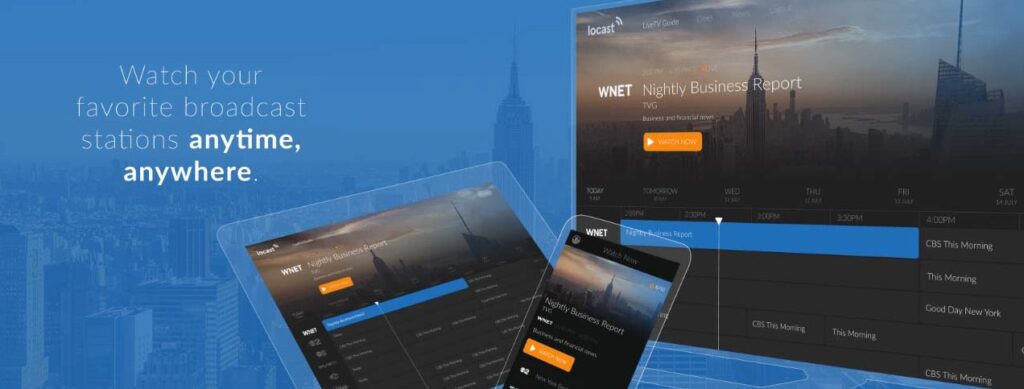Non – profit organization Sports Fans Coaliti on NY, Inc. (“SFCNY”) operated the Locast service, which captures over-the-air (“OTA”) broadcast signals and retransmits them over the internet, enabling viewers to stream live television on their preferred internet-connected viewing device. The signals include copyrighted transmissions from plaintiffs’ broadcast stations. Locast has not paid for a license or obtained plaintiff’s consent to retransmit those programs.
Locast’ s retransmissions are available online to any registered user in the designated geographic area, even those who can access the original OTA signal using OTA television antennas. Locast recipients have free access to the full repertory of news and entertainment channels; but non-paying users’ programming is interrupted after every fifteen minutes of watching a single channel with a fifteen-second video requesting donations, and viewers then lose time re-acquiring the program.
To avoid that interruption in service, users can pay $5 a month for “preferred” (i.e. uninterrupted) access to the service, or can request that the service stop displaying the donation requests based on their financial circumstances.
Users who choose to pay receive the uninterrupted service for time correlating to the amount of the payment. For example, if the user pays the minimum $5 amount, she receives uninterrupted service for the entire month.
If the user pays less, the time period during which she receives uninterrupted service within the month is decreased on a pro-rata basis (e. g., $1 paid provides uninterrupted service for 20 % of the month). The obvious economic fact is that these “donations” are really a scale of fees for uninterrupted service, and it works. At the court proceedings moment, Locast was almost fully funded by payments from users.
Discussion
Section III(a)(5) of the Copyright Act sets forth certain limitations on a copyright holder’s exclusive rights.
Subsection (a) (5) states:
(a) Certain Secondary Transmissions Exempted. -The secondary transmission of a performance or display of a work embodied in a primary transmission is not an infringement of copyright if-
(5) the secondary transmission is not made by a cable system but is made by a governmental body, or other nonprofit organization, without any purpose of direct or indirect commercial advantage, and without charge to the recipients of the secondary transmission other than assessments necessary to defray the actual and reasonable costs of maintaining and operating the secondary transmission service.
Based on the undisputed facts, it is clear that the Locast service is not offered without charges other than those “necessary to defray the actual and reasonable costs of maintaining and operating” its service.
The payments defendants elicit from users are charges assessed on users to avoid constant service interruptions, regardless of whether defendants euphemistically call them publicly “recommended donations”. Locast users pay the minimum $5 monthly fee in exchange for month-long, uninterrupted service. It is not merely a recurring gift to a charitable cause. It is of no consequence that a number of users employ the service without paying.
In 2020 Locast made far more money from user charges than was necessary to defray its costs of maintaining and operating its service.
Defendants argued that Locast’s funding qualifies for the statutory exemption because payments from users are reinvested in the organization to cover costs of “maintaining an operating an expanding system”, and the costs of expansion are part of the operation.
But under the statute, income made from charges to recipients can only be used to defray the actual and reasonable costs of maintaining and operating the service, not of expanding it into new markets. The argument that Section III(a)(5) should not “prevent” a natural process of expansion misconceives the statutory structure.
Since portions of its user payments fund Locast’s expansion, its charges exceed those “necessary to defray the actual and reasonable costs of maintaining and operating the secondary transmission service”, which is the only exemption granted in Section 111 (a) (5).
